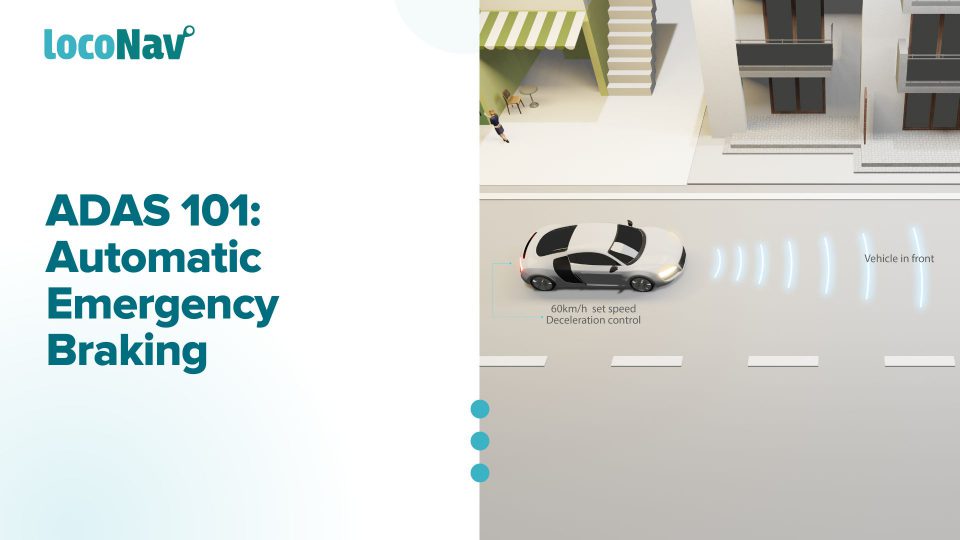

Vehicles are becoming a lot safer in the last decade, thanks to the introduction of various new active and passive safety systems. You may drive your automobile without concern, ensuring that the safety features will function properly. In recent years, driver-aid safety technologies such as autonomous emergency braking have grown more common in automobiles. The name alone may give you an indication of what AEB performs.
In this blog, we will discuss the basics of automatic emergency braking, what it is, how it works, and its various types.
What is Automatic Emergency Braking?
Automatic emergency braking (AEB) is a safety technology that can detect when a potential accident is about to occur and reacts by autonomously engaging the brakes to slow or stop a vehicle to avoid a collision. To identify potentially dangerous circumstances, radar, cameras, or LiDAR are routinely used. The slower the vehicle is driving, the more likely the automated emergency braking system will be able to bring it to a halt to avoid a collision.
Automatic Emergency Braking: How Does It Work?
The automatic emergency braking driver assistance system is powered by a network of radar sensors installed on the front or rear bumpers, or windshield. Some systems rely on cameras as well, and some complex systems combine radar sensors with cameras. Learn how the automated emergency braking system works.
- The sensors and/or cameras continuously measure the distance between your vehicle and the impending hazard (moving car, pedestrian, etc.).
⬇️
- If the distance closes quickly, such as if the vehicle in front brakes suddenly, the system promptly issues a warning.
⬇️
- An alarm message is delivered to the driver via voice or visual means.
⬇️
- If you are too late to respond, the AEB kicks in and applies the brakes automatically.
⬇️
- The ECU (Electronic Control Unit) analyzes your input and can recognize when you take your foot off the accelerator and manually apply the brakes.
Types of Automatic Emergency Braking
Depending on the make and model, autonomous braking systems can be of many forms. The various types of vehicle AEB are:
- Forward AEB
AEB functions in tandem with the Forward Collision Warning (FCW) system. The driver is notified by FCW via audio or a video indicator on the dashboard. First, the FCW notifies the driver of the impending impediment, and if the driver fails to take necessary action, the autonomous braking system takes over.
- Rear AEB
It is a system in which AEB activates if it identifies any obstructions when reversing the vehicle. In some vehicles, the rear AEB works in conjunction with the rear cross-traffic warning, which identifies the movement of vehicles following your vehicle when reversing.
- Pedestrian Detection AEB
This system is similar to front AEB in that the automated braking system works in conjunction with a forward-collision warning system that can identify pedestrians, bicycles, and even large animals. If the FCW identifies any pedestrians in front of the vehicle, the AEB will apply the brakes to slow or stop the vehicle, assuming the driver does not activate the brakes.
FAQs
Is AEB foolproof?
It is critical to realise that AEB is not perfect and that today’s AEB devices cannot prevent all crashes. Even high-speed AEB systems can only delay a vehicle in some situations, minimising rather than preventing a collision. Furthermore, tests reveal that AEB with detection and tracking cannot always notice bicyclists and pedestrians at night or when turning.
At what speeds is AEB effective?
Automatic emergency braking is often designed to engage at highway speeds if the sensors identify a vehicle ahead. In towns, newer systems operate at slower rates.
However, not all automated emergency braking systems can bring your vehicle to a complete stop. AAEB may still be able to slow you down sufficiently to avoid the hazard at speeds quicker than regular highway speeds.
Does AEB work for a vehicle of any size?
The characteristics of automatic emergency braking are tailored to identify other vehicles in front of you while driving. Not all features, however, will be able to detect motorcycles, bicycles, and other vehicles smaller than a car.
This is why you should constantly be conscious of your driving surroundings and the traffic ahead and never rely entirely on a system like automated emergency braking to keep you safe.
